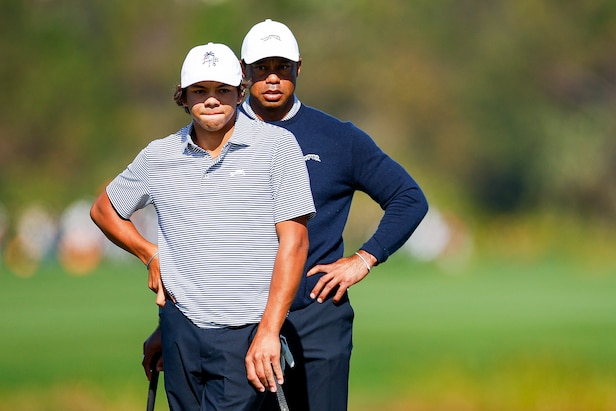This equipment tweak might fix some of your worst shots – Australian Golf Digest

- by Admin
- November 22, 2024

Question: I’ve heard about lie angle, but why does it matter?
Answer: In a perfect world, we’d all be able to grab clubs off the rack and find immediate success with them on the course. But it doesn’t work that way. Spend the necessary time building a set of irons and wedges to your exact specifications—with a certified clubfitter advising you—and long-term gains will follow.
Finding the correct head and shaft combinations will get you on the right track, but don’t overlook some of the lesser-known club modifications. In this case, we’re talking about one of the most critical features to be aware of: lie angle.
Of all the minor adjustments that can be made to a club, this one plays an important role in impact consistency and where your shots go.
For the uninitiated, lie angle is the measurement of the angle formed by the shaft to the ground when the sole of the club is touching the turf. The goal is to have the sole sit flush to the ground at address and impact for clean, reliable contact.
If the toe points upward at address, the club may be too upright at impact, leading to heel contact and a leftward divot. Hook shots will be a common occurrence. The opposite happens when the lie angle is too flat. Expect to see more pushes as a result.
To get a handle on lie angle, you need to consider several factors, including your height, arm length and swing characteristics. It’s easy to assume taller golfers need more upright clubs and shorter golfers require a flatter setup, but it’s best to let a fitter take the lead and determine the right specs. It’s all about finding a club build that ensures reliable contact with no manipulations.
And if you’ve never bothered to take a closer look at the lie angles on your current set of clubs, it’s plausible that inconsistent ball-striking is due to faulty lie angles, not poor swing mechanics. Even the pros are guilty of playing clubs that need to be adjusted one way or the other, so don’t assume it’s always operator error.
If you don’t have a clubfitter to consult, start by springing for a package of impact tape and analyze where the strike marks are showing up on the clubface. If more strikes are shaded toward the heel or toe, it’s possible that your clubs could use a lie-angle adjustment.
Once you’ve dialed in the lie angle on each club, just remember to get them checked every year if you play regularly. Lie angles change over time, especially if you beat countless range balls off artificial mats, so don’t assume this is a one-and-done adjustment.
Checking your lie angles might sound like a tedious task, but it’s a great way to ensure that the clubs in your bag do what they’re designed to do.
This article was originally published on golfdigest.com
The Latest News
-
December 23, 2024This quiet Canadian will make you love YouTube golf again – Australian Golf Digest
-
December 23, 2024Guide Helps Australian Workers Expose Tech Wrongdoings
-
December 23, 2024PPHG achieves GSTC multi-site certification for all its Australian properties – Travel And Tour World
-
December 23, 2024Championship three-peat reward for ‘clinical’ Aussies | cricket.com.au
-
December 23, 2024Australian tennis star Purcell takes on voluntary provisional suspension for breaking anti-doping rules





